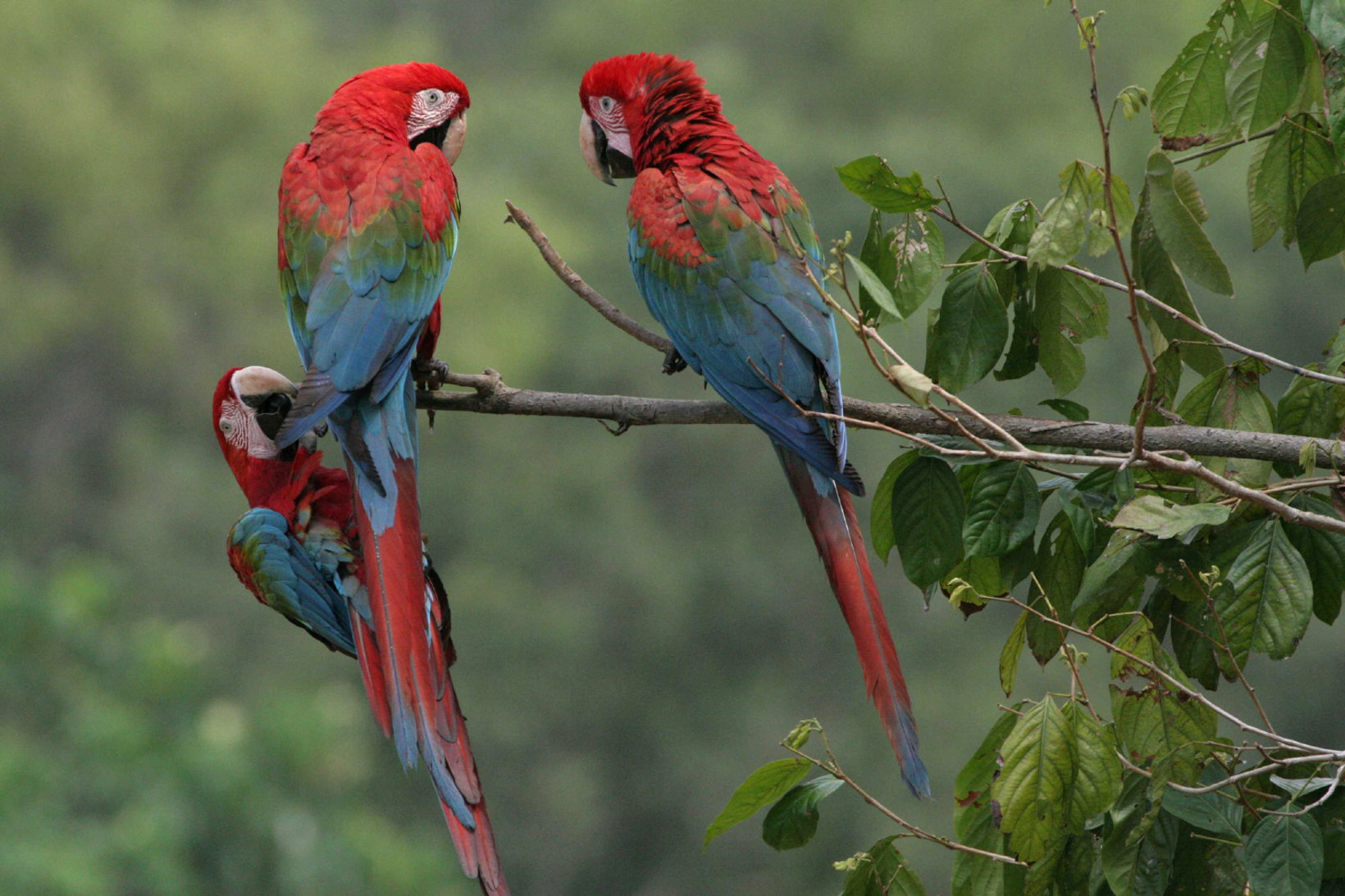I am beginning to prepare for a return to a remote Amazon post in Peru. After a visit to the classical sites of Machu Picchu and Cusco, I will fly to the Amazon port town of Puerto Maldonado. Peru has two Amazon ports, Iquitos in the Northeast, and Puerto Maldonado in the Southeast. Here I will boat into the heart of the Tambopata Reserve.
The extent of the reserve when combined with adjacent Manu is impressive, stretching nearly 2 million hectares. Protected since 1977, the park has been declared a World Heritage Site by UNESCO. Those venturing here come for research, education and ecotourism. And, all visitors contribute to the preservation of the natural and cultural heritage through a variety of fees.
Flora and fauna
The area is quite rich in its biodiversity given the variation in the habitats including mid-mountains, lowland savannah and primary riverine forests. 1,000 species of bird, including the harpy eagle, jabiru, and cock-of-the-rock; 200 species of mammal including the common woolly monkey, spider monkey, otters, jaguar, margay, and spectacled bear.
On my first visit with my husband, we were greeted by hand-painted signs depicting wild cats, primates and birds. Transferring in small buses and river boats we got acquainted with fellow adventurers from Canada, the US, Europe, Australia, and New Zealand. Along the river, we noticed thousands of butterflies belonging to dozens of species congregating in rich mineral soils. We were also able to add quite a few new species to our bird list. Typical tree encountered were lupuna (ceiba), cetico (cecropia), cedar, huaira caspi renowned for medical purposes and matapalo (strangler fig). Some reached heights of over 100 feet above the banks.
For the upcoming trip, I know that I'll need to prepare for humidity and long days of exploration. The lowland rain forests are typically warm and humid. One can expect the average daytime high to between 82° and 93° F (25° and 31°C) and the average nighttime low between 62° and 73° F (16° and 22°C). During the drier winter season between May and October the temperatures and humidity may be a bit lower. The rainy months of November through April are still do-able, but come with daily and nightly rain showers. Around 80% of the annual 2,000 - 2600 mm average rainfall occurs during this season.
Cultural Heritage
The territory is currently home to more dozens of Quechua-speaking rural communities, as well as many ethnic groups indigenous to the Amazon, including the Ese'eja, Matsiguenka, Amahuaca, Yaminahua, Piro, Amarakaeri, Huashipaire and Nahua. Where appropriate and welcomed, interaction with the original peoples is included in Amazonian eco-tourism. It is enriching discovering ways of life and living in this tropical homeland. Also special are the times you leave the final traces of human habitation behind and enter the completely human uninhabited nucleus of the Reserve. The local indigenous guides that accompany these expeditions add yet another layer of experience.
A typical day where the Andes meet the Amazon
Typically, the day begins at 4:30 am, before first light. You can grab some coffee and light refreshments before heading out by foot or canoe. A common outing is an Oxbow lake. These lakes are created when meandering tropical rivers break through the bank during strong wet season rains thus isolating sections of the old river. The new lake becomes its own ecosystem and is an ideal habitat for fishing and for spotting amazing birds such as the Hoatzin. Mammals such as the giant river otter often make an appearance. One day we say a family of five catching fish. Pontooning on Chimbadas Lake one morning, we recorded nearly 40 bird species and spotted an 8-foot black caiman, electric eel, piranhas, and had the good fortune of walking under a mixed troop of capuchin and squirrel monkey. In all likelihood you have to work hard to get a good look at wildlife as it quickly disappears through branches, vines and dense vegetation. Several locations have a canopy tower climb for a tree top view. When timed right you can see flocks of neo-tropical birds and troops of Dusky Titi monkeys. At any time the jungle can erupt with the sound of Howler monkeys. By mid-morning, animal activity decreases and it is now time to head back to the lodge for relaxing, reading, or sketching. The next outings take place in the late afternoon or nocturnally.
Wonderful encounters happen often including the vividly coloured flocks of thousands of parrots, parakeets, and macaws at a clay lick near the ecolodge. My first visit was to Posada Amazonas, and this one will include the Tambopata ecolodge and a camping trip deeper into the Tambopata Reserve near a spectacular clay lick. The January 1994 issue of National Geographic features an article on Tambopata clay lick. It begins with a description of the daily spectacle at the clay lick: "When the morning sun clears the Amazon tree line in southeastern Peru and strikes a gray-pink clay bank on the upper Tambopata River, one of the world's most dazzling wildlife gatherings is nearing its riotous peak. The steep bank has become a pulsing, 130-foot-high palette of red, blue, yellow and green as more than a thousand parrots squabble over choice perches to grab a beakful of clay, a vital but mysterious part of their diet. More than a dozen parrot species will visit the clay lick throughout the day, but this midmorning crush belongs to the giants of the parrot world, the macaws." I am excited for this next chapter camping adventure.
RECOMMENDED BOOKS ON THE RAINFOREST
“PERU’S AMAZONIAN EDEN: MANU NATIONAL PARK AND BIOSPHERE RESERVE”, McQuarrie, Kim. Spain, 1992.
“HERE THE ANDES MEET THE AMAZON: PERU AND BOLIVIA’S BAHUAJA-SONENE AND MADID NATIONAL PARKS”, McQuarrie, Kim. Spain, 2001.
“A NATURALIST IN THE AMAZON RIVER”, Bates, Henry Walter, 2020. First-hand account of explorations from 1848-59 by one of the first natural. IMAX movie features this work.
“BUTTERFLIES OF SOUTH AMERICA”, D’Abrera, Bernard
“BIRDS OF THE HIGH ANDES”, Fjelså and Krabbe.
“NEOTROPICAL RAINFOREST MAMMALS: A FIELD GUIDE”, Emmons, Louise and Feer, Francois,
“A NEOTROPICAL COMPANION”, Kricher, John C.
“CLOUD FOREST: A CHRONICLE OF THE SOUTH AMERICAN WILDERNESS”, Mathiessen, Peter. Viking,
“THE RIVERS AMAZON”, Shoumatoff, Alex. Sierra Club Books,
“THE AMAZON”, Sterling, Thomas. Time-Life Books,
“COLLINS GUIDE TO TROPICAL PLANTS”, William Lotschert & Gerhard Beese

